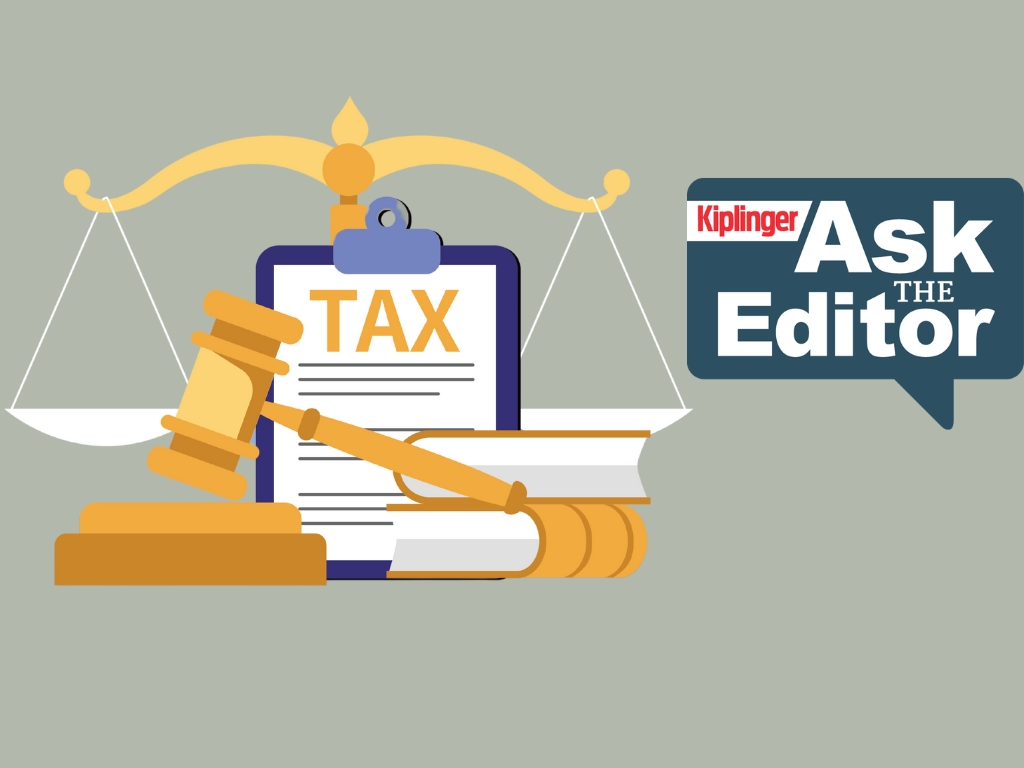My Car Is 10 Years Old. Should I Drop Down to Minimum Coverage on My Car Insurance?
Reducing your car insurance to minimum coverage could save you thousands on premiums. But when is it worth the risk?

Question: My car is 10 years old. Should I drop down to minimum coverage on my car insurance?
Answer: The 10-year mark is a good time to reevaluate your car insurance needs, but there's more to making coverage decisions than your car's age alone. According to Bankrate, the national average cost of full coverage car insurance is $2,679 while minimum coverage averages just $808.
Dropping your coverage has the potential to lower your insurance premiums by around $1,800. Whether that $1,800 per year in savings is worth the increased risk you face by not having comprehensive or collision coverage will depend on a lot of factors. Here's what you need to think about before you decide.

Sign up for Kiplinger’s Free E-Newsletters
Profit and prosper with the best of expert advice on investing, taxes, retirement, personal finance and more - straight to your e-mail.
Profit and prosper with the best of expert advice - straight to your e-mail.
Find out how much you, personally, would save by switching to minimum coverage

At a certain point, the premiums you're paying for full coverage aren't worth the payout you'd get if your car was totaled. The first step to figuring out if you've reached that point is figuring out the dollar amount you'd save on premiums each year.
As mentioned earlier, you could be looking at around $1,800 per year in savings based on national averages. But it's a good idea to check with your insurer to get a more precise estimate.
Each state has its own minimum coverage requirements and the insurance rates you pay depend on so many different factors that your premiums could be significantly higher or lower than the national average mentioned above.
In some cases, you can use your insurer's online portal to get instant estimates on your premiums based on different coverage scenarios. If your insurance provider doesn't offer that, call them up and ask how much your premium would be if you reduced coverage to the minimum requirements in your state.
Once you have that number, you know how much you would actually save by switching car insurance. The next step is to figure out how much financial risk you're exposing yourself to by dropping coverage. That part isn't quite as straightforward.
How much can you expect your car insurance to pay?

To decide if full coverage is worth its weight in premiums, you need to estimate the maximum payout you could possibly receive if your car was damaged by something covered in the comprehensive or collision coverage you're thinking about dropping. To do that, answer the following questions:
- What is the current fair market value of your car? This is roughly the amount your insurer would pay if your car is totaled. In other words, it's the most you could ever expect to get paid after an accident. You can use tools from sites like Carfax or Kelley Blue Book (KBB) to get an estimate.
- How much do common repairs cost for your car? In the 10 years you've owned your car, you've probably had to make some repairs to it. Dig through your records and note the amount you paid for different repairs. Note that tariffs are raising the cost of car repairs as well so plan for those same repairs to cost a little more in the future. You should also look up estimates for other common types of damage you'd need to get repaired after a car accident. That includes body work like repainting, patching up dents or scratches or replacing broken fenders and headlights. It also includes internal repairs like fixing leaks and damaged engine components.
- How many years of saved premiums would it take to reach that maximum payout? If you don't want to do the research on the cost of repairs, another way of thinking about the value of full coverage is how long it would take you to save up the maximum payout yourself. Let's say your current fair market value is about $10,000. At an average of $1,800 per year in saved premiums, it would take you over five years to save up that $10,000 yourself. If the estimated value is only about $5,000, however, you'd have that cash saved in under three years.
Based on those estimates, how quickly would the cost of repairs outweigh the fair market value of your car? Remember, your insurer will total your car if the cost of repairs after an accident are more than the fair market value of your car.
If fixing a headlight or replacing a radiator would be enough to put your repair costs over that value, your "full coverage" car insurance isn't really providing much coverage. But if the fair market value is still high enough that the repair cost from minor accidents wouldn't risk your car being totaled, full coverage is still providing some value.
How much longer do you plan to keep this car?

The next factor to consider is how many more years you plan to drive this car and what your plan is when it comes to buying the next one.
If you're planning to drive this 10-year old car into the ground, you may well have another 10 years of driving left on it – but you probably aren't expecting a huge payout or trade-in value when it comes time to get a new (or new-to-you) ride.
In that scenario, dropping to minimum coverage now and stashing that $1,800 or so per year of saved premiums into a high-yield savings account or CD account would give you a nice nest egg to put toward your next car when you finally do need to retire old reliable.
If your car is damaged in an at-fault accident before you're ready to trade it in, you can use those savings to cover the repairs out of pocket and still have time left to rebuild your savings for your next car.
If you're planning to upgrade in the next couple of years, you might be hoping for a decent sale price or trade-in value to put toward your next car. In that case, keeping full coverage probably makes more sense.
The $1,800 or so per year you'd save won't build up fast enough in a year or two to make up for the risk of your car being totaled and leaving you with no cash on hand to put a down payment on something new.
Situations when you should never drop to minimum car insurance
While there are some scenarios where the saved premiums are worth more than the value you're getting out of full coverage car insurance, there are a few situations where it's never worth the risk:
- You're leasing the car. Leasing agents typically require full coverage as part of the terms of the lease.
- You're still paying off the car loan. Full coverage is sometimes required by lenders. Even if it isn't, if you're still paying off this car, your financial risk in an at-fault accident is high. If your car is damaged beyond repair, you could be left paying off a loan for a car that is now sitting in a junkyard while also taking out a new loan for a new car.
- You have a luxury or exotic car. If you're driving your dream car, you really don't want to risk being underinsured. The specialty repairs are more costly and replacing that car in an accident isn't always as straightforward as heading to your local dealership. Even the higher rates of specialty coverage needed for this car are still likely low enough to be worth the peace of mind that you'll be paid the full cash value of your specialty vehicle if anything were to happen.
Deciding if minimum coverage is right for you
The right time to reduce your coverage to the minimum car insurance required by your state might be today or it might be never. The answer depends on how much you're paying, how much your insurance would pay you in a covered accident and how much risk you're willing to expose yourself to for the remaining years you plan to drive this car.
With that said, if you drive a car long enough – and it isn't a rare or specialty model – you will probably reach a point where the maximum payout you can expect from a full coverage policy isn't worth the thousands per year in extra premiums you're paying for that coverage.
Related content
Profit and prosper with the best of Kiplinger's advice on investing, taxes, retirement, personal finance and much more. Delivered daily. Enter your email in the box and click Sign Me Up.

Rachael Green is a personal finance eCommerce writer specializing in insurance, travel, and credit cards. Before joining Kiplinger in 2025, she wrote blogs and whitepapers for financial advisors and reported on everything from the latest business news and investing trends to the best shopping deals. Her bylines have appeared in Benzinga, CBS News, Travel + Leisure, Bustle, and numerous other publications. A former digital nomad, Rachael lived in Lund, Vienna, and New York before settling down in Atlanta. She’s eager to share her tips for finding the best travel deals and navigating the logistics of managing money while living abroad. When she’s not researching the latest insurance trends or sharing the best credit card reward hacks, Rachael can be found traveling or working in her garden.
-
 Ask the Editor — Tax Questions on What Congress Will Do Next
Ask the Editor — Tax Questions on What Congress Will Do NextAsk the Editor In this week's Ask the Editor Q&A, we answer questions from readers on what Congress will do next with taxes.
-
 When Tech is Too Much
When Tech is Too MuchOur Kiplinger Retirement Report editor, David Crook, sounds off on the everyday annoyances of technology.
-
 Spirit Airlines' Future in Doubt: What This Means for Budget Travel
Spirit Airlines' Future in Doubt: What This Means for Budget TravelSpirit Airlines says it may not survive another year. Here's how its potential collapse could affect low-cost flights and what it means for travelers seeking affordable airfare.
-
 Bonds Pay in Good and Bad Times
Bonds Pay in Good and Bad TimesBonds can act as a financial safety net through good times and bad. But different bonds carry different returns and risks, so do your homework before investing.
-
 TSA Is Making Security Screening Even Faster for CLEAR+ Members
TSA Is Making Security Screening Even Faster for CLEAR+ MembersNew eGates promise to make identity verification a six second process for CLEAR+ members.
-
 How Much the Best Travel Credit Cards Can Save You on a $10,000 Trip
How Much the Best Travel Credit Cards Can Save You on a $10,000 TripTravel credit cards can help you save on your trips while offering elevated perks.
-
 Protect Your Retirement From Extreme Weather Events
Protect Your Retirement From Extreme Weather EventsA rising tide of storms, fires, and heat is impacting retirees. Here's what you can do about it.
-
 Board Service in Retirement: The Best Time to Join a Board Is Before You Retire
Board Service in Retirement: The Best Time to Join a Board Is Before You RetireMany senior executives wait until retirement to take a seat on a corporate board. But making this career move early is a win-win for you and your current organization.
-
 Where I'm Stashing My Emergency Fund Before Rates Change
Where I'm Stashing My Emergency Fund Before Rates ChangeKnowing what's coming can help savers prepare and maximize returns.
-
 Don't Be a Sucker: The Truth About Guarantor and Cosigner Agreements
Don't Be a Sucker: The Truth About Guarantor and Cosigner AgreementsThere are significant financial and relationship risks involved if you agree to be a cosigner or guarantor. Make sure you perform your due diligence, and know exactly what you're getting into, before agreeing to such a commitment.